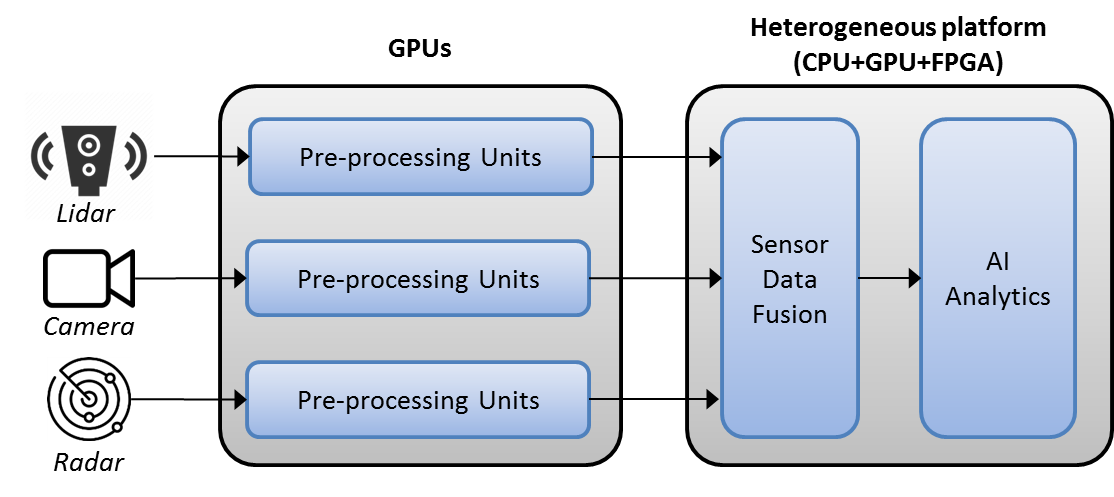Railway use case: Obstacle Detection and Avoidance System (O.D.A.S.)
Overview
This use case, provided by AMPERE’s partner THALES Italy, will provide a real demonstrator on the Florence Tramway Network railway industry, including LRT (Light Rail Transit) or tramway systems. Concretely, the use case will implement an Obstacle Detection and Avoidance System (O.D.A.S.) supporting the tram driver, improving the level of safety of the Florence LRT transportation system. The use case consists of two main subsystems:
- The Sensor Data Fusion (SDF).
- The AI Analytics (AI) component.

Functioning
The SDF component will be in charge of collecting a large mass of raw data from the multiple advanced sensors installed in tram vehicles, i.e., optical and thermal cameras, radars, and LiDARs (light detection and ranging). Cameras are an effective tool for classifying objects (rails, signs vehicles, people...) through deep learning technologies; LiDAR and radar are good at estimating the position of objects around the vehicle. Each of these sensors has advantages and disadvantages depending on the operational scenarios, environmental and lighting conditions. For instance, backscattering from snowflakes or water droplets are sources of unwanted detections in automotive LiDARs, and cameras show limited performances in adverse weather conditions such as fog or rain.
Many of the previous constraints can be minimized using specific sensor techniques which, on the other hand, increase the sensor cost. Using sensor data-fusion machinery for having a common homographic view of the objects will increase the performance of the sensor system keeping the cost in a range suitable to the application target. The AI component will incorporate machine learning (e.g., Support Vector Machines, SVM) and deep learning (e.g., Convolutional Neural Networks, CNN, and Recurrent Neural Networks, RNN) algorithms to identify and track objects along the tramway infrastructure and extract knowledge that will be displayed to the tram driver.
Integration
The two components will be distributed and executed in a Commercial Off-The-Shelf (COTS) parallel and heterogeneous platform installed on-board tram vehicles, featuring multi-core SoC with FPGAs, GPUs and dedicated AI accelerators such as TPUs, capable of accelerating large matrix operations and perform mixed precision matrix multiply and accumulate calculations in a single operation. Moreover, the platform will host multiple standard hardware interfaces to ease the integration of the system into a wide range of operation conditions.
Finally, the constrained environment in which the computationally intensive functionalities will execute, imposes the need of using energy efficiency platforms with power envelopes lower than 30W. The use case will be verified in a real transportation environment of the Florence tramway network. To do so, a set of tram vehicles operating on Florence tramway lines will be equipped with sensors and related processing devices in order to demonstrate the performance capabilities and the fulfilment of non-functional requirements of the AMPERE ecosystem.
As a result, O.D.A.S. will implement functionalities with different criticality level in terms of functional safety and strict time constraints due to the real operation conditions with tram vehicles moving in an urban environment with traffic mixed with cars and pedestrians.
Key performance indicators of the AMPERE ecosystem
- Reduce the development and integration costs of the ADAS functional critical software modules by employing the AMPERE ecosystem starting from the system design phase.
- Improve the object detection capability and reduce the false alarms rate in critical environmental conditions (fog, rain, at night) by combining AMPERE with existing on-board systems.
- Reduce the energy needs of the ADAS component while retaining functional safety targets according to the standards.





